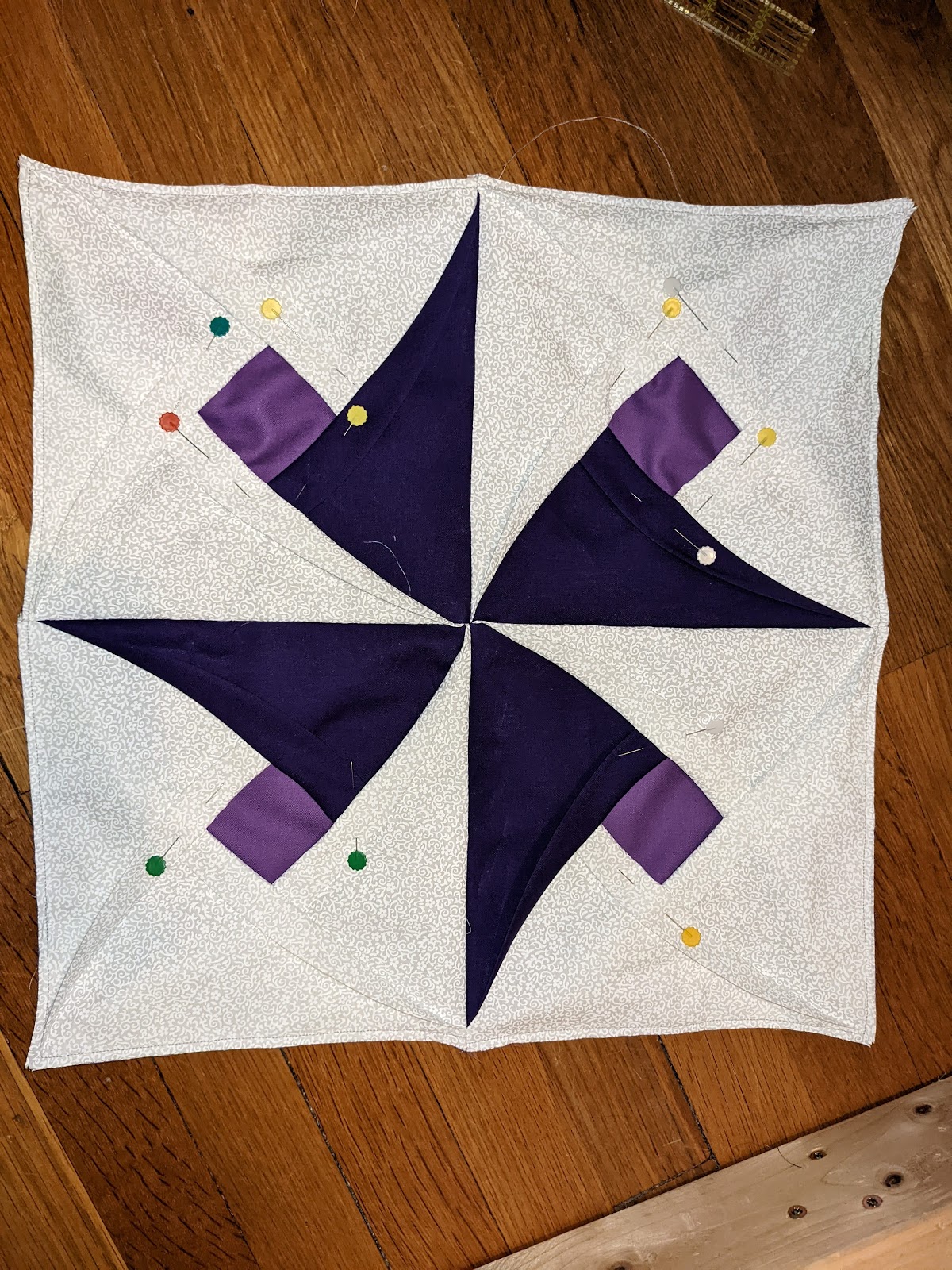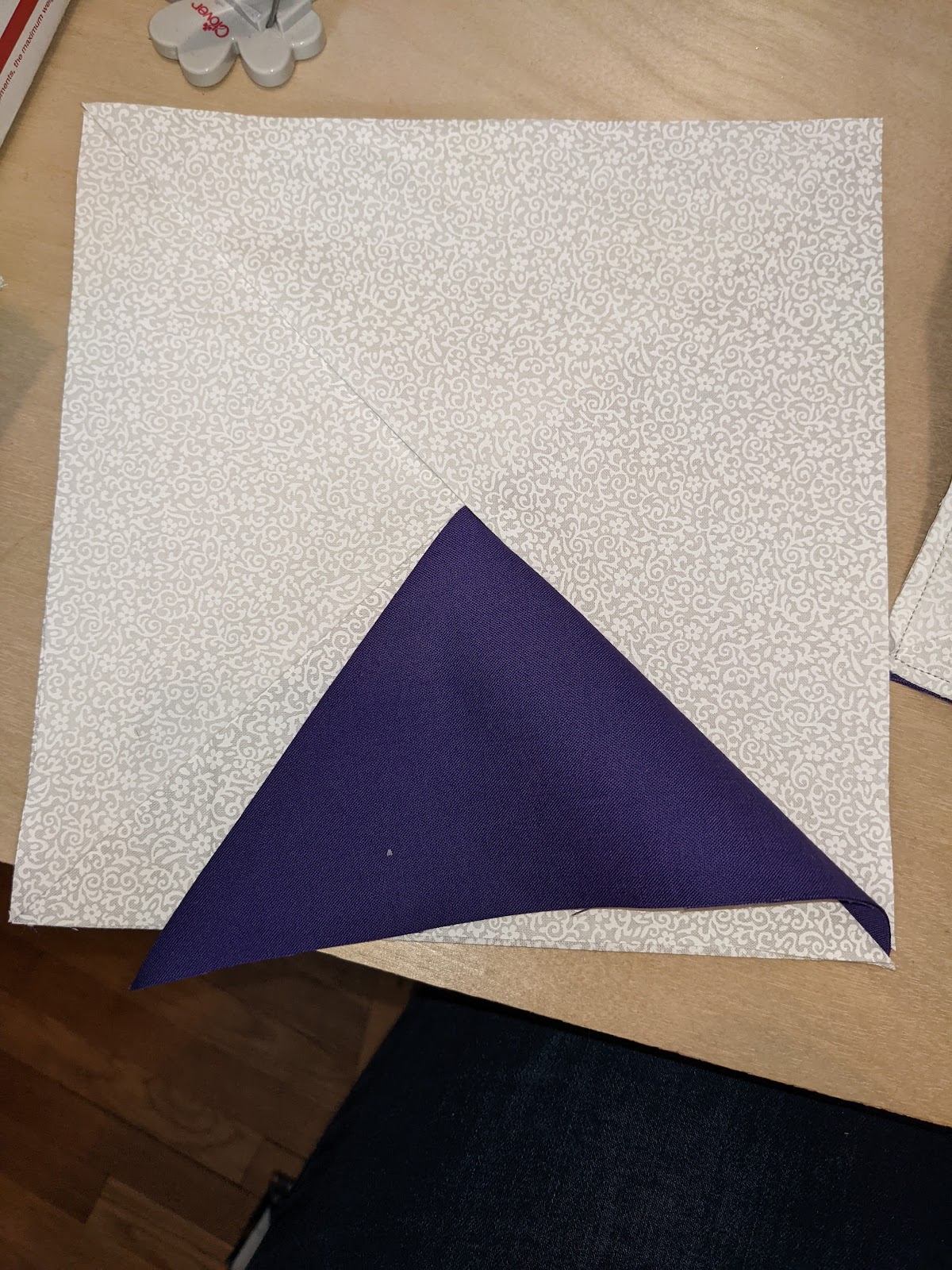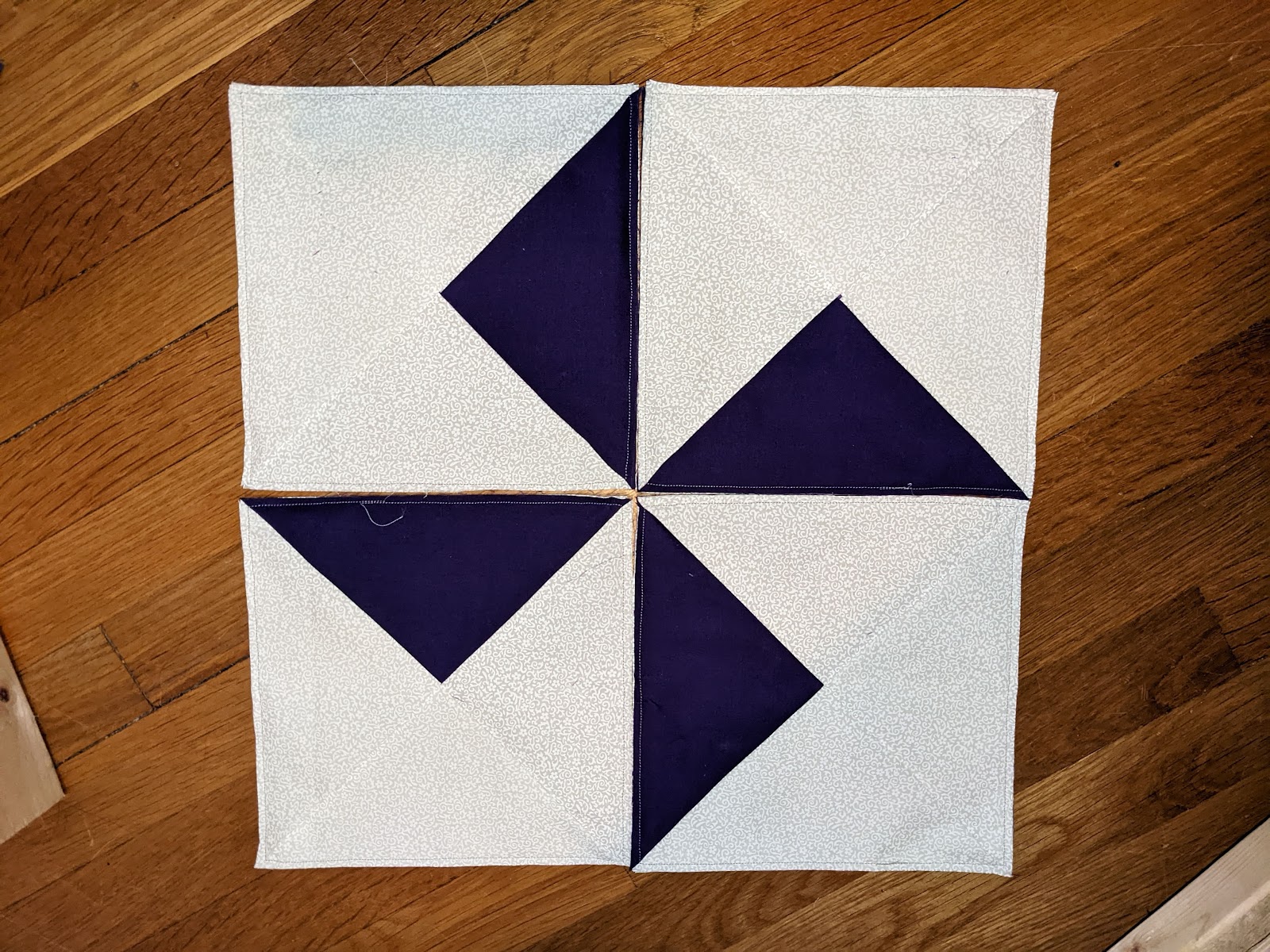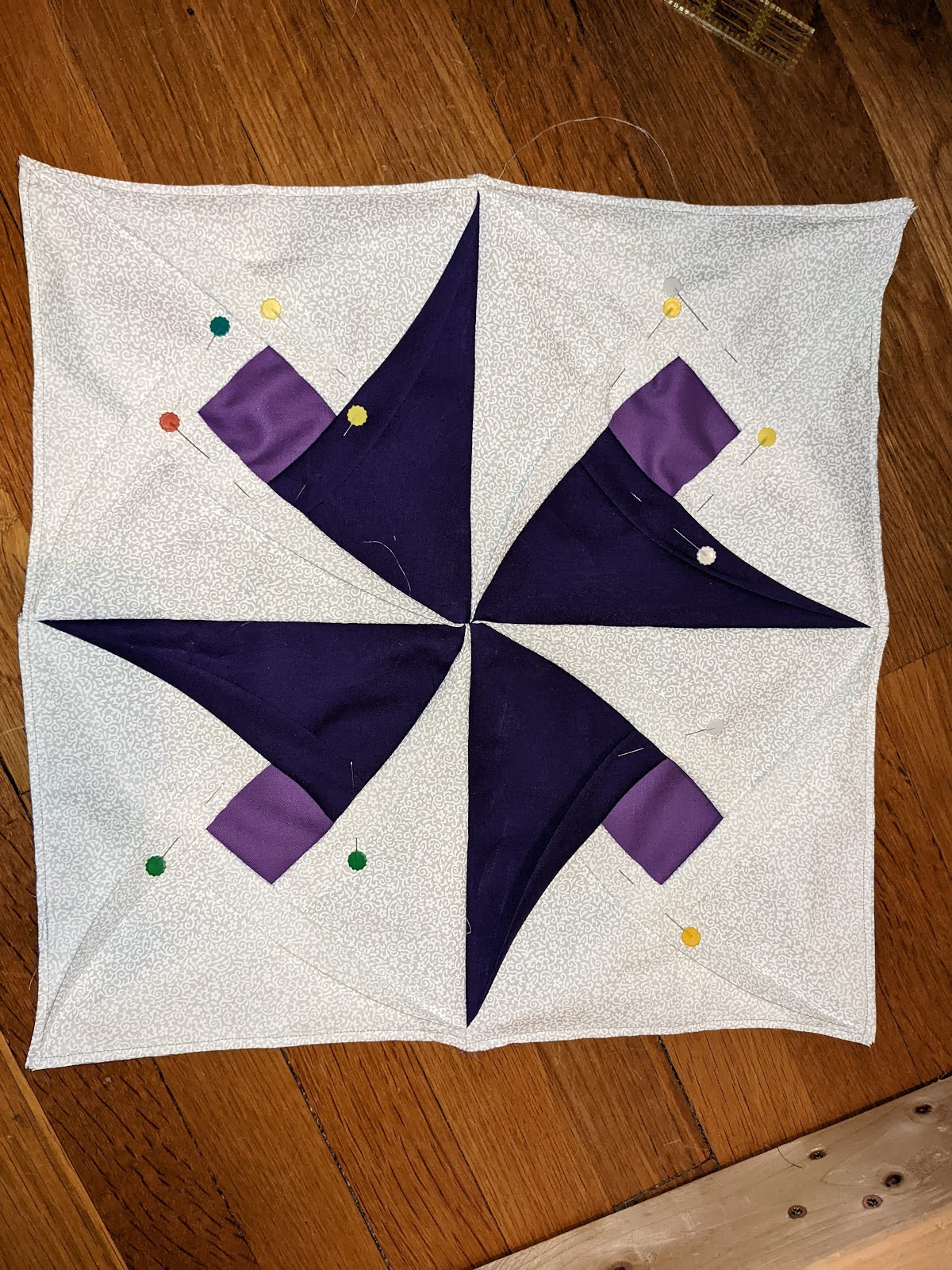Dear Bees
Right from the beginning, I wanted to make an improv block done during my turn. I don’t want it to be too crazy because at the end it will be gifted to my best friend Brigitte.
I know improv can be quite challenging for some but I hope to keep it simple. So I tried to figure out an easy way to follow to make this block possible for all of you. At the end its still kind of improv-ish and a bit wonky but in an hopefully “neat” way.
The basic of the block is inspired by two amazing Quilters:
First by Victoria Finlay Wolf with her15-minutes Play - making fabric - it helped me to free myself just to add fabrics to each other.
With my block we will play a little too. But to lay out the different scraps fabrics in 15 minutes - before sewing them together and then still playing, adding more scraps or turning them round.
Secondly, Maryline Collioud-Robert (Mary & Patch) with her use of color and structure. I had the chance to take part at one of her workshops back in May. And I learned lots and how easier it get if you add some underlying structures through the improv blocks.l
From her I was
inspired to send you all some scraps in the same colors the week before to bring these blocks together.
So lets talk block - “Improv in August”:
You will need green scraps in different shades and patterns. Use green in every way, uni’s, faux unis, modern patterned greens, add 1 to 3 fancy prints with green highlights. But less batik’s, no pastels or greyish shadowy greens and no recognisable Christmas themes, please.
See my fabric pull as example, actually its the scrap pull in green.
You need a roller cutter or scissor and a cutting mat. (A ruler is only needed at the end to square it up).
A bit of space beside your sewing machine. It will be easier being able to put the cutting matt with the layout beside it for sewing.
First: Take your greens and even tiny green scraps close to you. And the yellow and blue scraps I’ve sent you too.
Choose 10 to 12 of your green pieces/scraps
- after choosing your main fabrics, set the timer on 15 minutes and play !
Playfully lay down your green bits.
Fold bigger pieces of your fabric and cut smaller bits of them to fit it in.Lay
them out randomly.
Rule: Put my blue and yellow scraps in between. It should have 5 to max 7 pieces of them in your block.
Rule: The scraps should be in a more or less rectangular shape –cut by hand and eye.
Don’t overthink it - just enjoy.
For these 15 minutes of play –the general layout should be around 16-18-inches. If you need 20 minutes its fine as well- there’s no quilting police - only try not to overthink.
Mine looked like this: (the biggest scrap was about 4x 4-ish or 6x2-ish Inch in size)
Take your cutting matt, cutter and layout over to your sewing machine.
As well as some of your bigger offcuts, they may com handy to add sometimes a few inches. Remember it’s all a bit wonky and suddenly you may need some more fabric to extend the fabric.
Start to sew them together.
I mostly sew two pieces together, first round even in a way of chain piecing. Lay
them, after a good finger press, back on the matt.
 |
You may forget were they did “belong” to -
it
doesn’t matter. Find a new spot - nobody knows.
Add the pieces together as you go along, finger
press and add more.
As you see I was adding more scraps (like the bunnies) during my sewing, not only because the ¼ Inch is unplanned, also the layout is so loose - it will “shrink” you will be surprised.
Add fabric, finger press, add some more until they are bigger and you prefer to press them. Sew, press, repeat until you are done.

Straighten the edges and enjoy your piece of art.
This should be possible within the 1.5 hour
rule. If your block isn’t square or you are not happy with one big piece don’t worry.
I’ll take it all 😍
See my first block as an example. Two recatangular pieces
With so many tiny and wonky bits and I was not happy to put them together for getting
my block done, so they will stay rectangular.
I realized that I didn’t like some parts of my first block as much as I imagined. Somehow it seemed to be too busy and nervous that’s why I adapted my guideline for my Improv in August block a bit. As a result I use less tiny pieces of different fabrics, more repetition and some bigger pieces.
Please tell me about your discoveries doing it. What did you like or not, and why?
New to improve ? Just give it a try an play.
I’m so excited to see all your “Improv in August” Blocks
Greetings from Switzerland
Karin
P.S. If you really, really struggle, just send me a message and I’ll send you an adaptable solution.







.jpg)








































